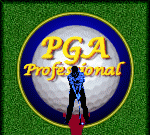Ask the Pro Archive - 2012
|
Here are all the golf questions and answers that appeared on the "Ask the Pro" page in 2012, from most recent to least recent, top to bottom. Links in the left menu column give a "keyword" indication
of the topic and will take you directly to that entry on this page. Also see the Ask the Pro Archive Index for longer descriptions in categorized and somewhat alphabetized form.
|
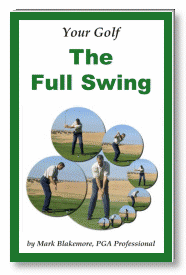 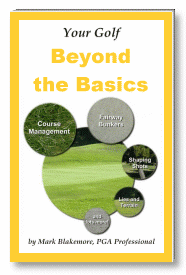 |
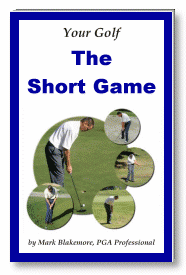 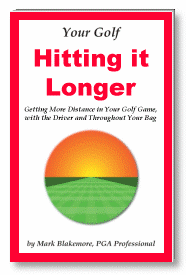 |
Answer:
Hello Sudish,
I'd have to see what you are doing to comment on it. But based on your description I'm not sure that tilting to the right (if that is indeed what you are doing) is a good idea. Again, I -- or a qualified professional near you -- would have to observe what you are doing.
If, by some chance, you are correct in your analysis, then since you are aware of the problem and what the correct move would be, the solution is to practice very consciously eliminating the wrong move and developing the right one (perhaps in slow motion, perhaps in front of a mirror, etc.).
As far as details like keeping your balance, rotating around a constant spine angle, and staying in position through impact rather than coming "up and out," etc., those are certainly things that you need to become keenly aware of and manage through long term practice.
There could be so many different things going on in your personal technique that your description does not address the actual issue(s). But, yet again, only by seeing what you were doing could anybody actually give you correction.
Swing technique is covered in detail in my books "The Full Swing," "Beyond the Basics," and "Hitting it Longer." (Get the books.)
If you ever visit the San Francisco bay area you can work on your game with me in person.
Thanks for visiting PGAProfessional.com and best of luck with your game. MB
Long Game > General > Which club to use from the rough
Question:
December 12, 2012
I am new to playing golf. My boyfriend keeps telling me to use my 5 wood to get out of tall grass and rough situations. This does not seem to work well. What club do you suggest?
Linda Lundquist
Corvallis, OR
Answer:
Hi Linda,
In theory, a 5 wood will work well in many situations where the grass is mildly long-ish, but your technique has to be fairly developed for that to actually be the case. Until then, I'd suggest trying a more lofted iron (6, 7, 8, 9, etc.) -- it may not go as far as a 5 wood could go, but will generally be easier to use. Thanks for visiting PGAProfessional.com and best of luck with your game. MB
Miscellaneous > Professional golf-related > Do European pro's play the "small ball" and are courses in yards or meters?
Question:
November 28, 2012
Do PGA golfers still have to play the smaller ball in Europe & are the tournament scorecards in Europe in metric, yards or both?
Dom Marucci
Philadelphia, PA
Answer:
If by smaller ball you mean the "British ball," or "small ball," or "European ball," or "British Open ball" that was common many decades ago (which was 1.62 inches in diameter instead of the standard 1.68 inches) the answer is no: that ball has not been allowed by the R & A for more than 20 years (since 1990) and the small ball has been disallowed from even The Open Championship since 1974.
European courses are most commonly in meters, with the exception of the U.K. But as for tournament scorecards, you'd have to check with the event or sanctioning body. Thanks for visiting PGAProfessional.com and best of luck with your game. MB
Equipment > The modern golf ball curves less
Question:
November 7, 2012
You often hear said on TV "the ball doesn't curve today like it used to." I find this comment curious since I believe that curving a ball is the result of spin. And yet, when the pros hit the green, most can spin it back off the green. The best players work on reducing their spin on greens when they need to. Is that not the same spin that would help "curve" a ball off the tee?
Tom Walton
Houston, TX
Answer:
Hi Tom,
Yes, it is spin that makes the ball curve, and with most clubs the older balata-covered balls had higher spin than today's balls (not to mention that the old balls were probably less perfectly round, which may have effected the "curvability" further). But the irons, especially the shorter irons, still spin a lot with modern balls; so getting backspin on the greens is still easy for those who make good contact. (Note: that hook that Bubba Watson hit on the playoff hole in The Masters was with a wedge -- a short iron, with lots of club head speed, and good contact = lots of spin and quite a bit of curve.) Therefore, short irons can still spin too much, if you're not careful - especially on softer greens.
So generally, for most players it is more difficult nowadays to curve the ball a lot than it used to be. Those with higher club speeds and great technique can still shape it relatively much but, again, not like in "the olden days,"in most cases. Thanks for visiting PGAProfessional.com and best of luck with your game. MB
Long Game > General > Club selection - deciding when to hit an iron, hybrid or fairway wood/metal
Question:
October 24, 2012
If you can hit a fairway metal 200 yds. and ... a 7 iron 150 yds., thus your 2 iron should hit 200 yds. When do you decide to hit a metal [fairway wood/hybrid] or an iron?
David Coon
Frederick, MD
  |
  |
Answer:
Hi David,
The short answer is that it is based on personal preference and experience.
The longer answer is that, although "on paper" each club's distance is separated by about 10 yards for most men (5 to 7 yards might be a better average for women), that's only in theory. In order for that to be true, or true enough to actually be applicable, your skill level has to be high enough to produce reasonably good quality shots consistently. Most recreational golfers can't really do this, and so even though one might get 150 yards out of their 7 iron, on average, even guessing what they can get out of a long iron might be problematic -- thus the modern world of hybrids and lofted utility woods, etc., which usually produce somewhat more reliable results, on average, than do long irons. You'll notice that even among professionals a 2 iron is extremely rare any more (what a shame).
So you have to practice and play with clubs enough to know what they can do. Then choosing which one to use in any given situation will be based on experience and your best guess at the moment. It's also advisable to get fitted in person with a reputable golf professional with fitting expertise. But that still assumes that you can reproduce pretty consistent swings/shots. If you're not there yet then working on technique is far more relevant.
Swing technique is covered in detail in my books "The Full Swing," "Beyond the Basics," and "Hitting it Longer." (Get the books.)
If you ever visit the San Francisco bay area you can work on your game with me in person.
Thanks for visiting PGAProfessional.com and best of luck with your game. MB
Miscellaneous > Professional golf-related > Hidden undulations on greens
Question:
October 11, 2012
Many times on a putt, even for Pros, I see the ball unexpectedly veer away from the hole. Is this because the green is designed to have hidden surface undulations?
Ratna Nanisetty
Eagan, MN
Answer:
Hi Ratna,
The undulations are not hidden, per se, to the players (though they may be subtle to varying degrees) but they are difficult to see on television. Thanks for visiting PGAProfessional.com and best of luck with your game. MB
Miscellaneous > Terminology - Words and Phrases > What is meant by "soft hands"
Question:
September 23, 2012
What do they mean when you hear "you must have soft hands?" Are they talking about grip, wrist action, or something else?
Joseph Scocco
Mt. Arlington, NJ
Answer:
Hi Joseph,
Usage of the term "soft" can vary a bit, but it mainly refers to grip tension (soft = not squeezing or tight). Some people might also mean mean to suggest more passive, rather than active, hands. Thanks for visiting PGAProfessional.com and best of luck with your game. MB
Miscellaneous > Professional golf-related > Annoying yelling by fans
Question:
September 10, 2012
I am curious[:] when I watch someone [on TV] putting, after he hits the ball someone yells out "Get in the hole!" Is this an enthusiast[ic] fan or is it someone paid by the PGA to make it seem more exciting[?] To me it seems annoying for other fans in attendance. Golf seems to have a lot of rules and I wonder if there is one that pertains to shouting out like such.
Ron Cohen
Warren, OH
Answer:
Hi Rob,
Yes, that is most likely a fan demonstrating extremely poor taste and lack of good judgement -- perhaps for the reason of being "into it," but more likely for an unfortunate reason, like wanting to hear their own voice on a playback of the event (e.g., "That was me, yuk yuk yuk"). If the marshals or tournament officials can identify the person I'm sure they usually try to address it (give them a warning, ask them to leave, etc.), but I suppose they can't be everywhere. You might contact the PGA Tour directly to ask them how they deal with things like this. It does seem to be all too frequent, and yes, annoying, embarrassing -- all that -- for those in attendance and those watching on TV. Thanks for visiting PGAProfessional.com and best of luck with your game. MB
Long Game > General > Playing from hardpan or tight lies
Question:
August 23, 2012
The courses [here] are barely watered and just about every shot from the fairway is on hardpan or grass that is so flattened that you cannot even hit a 3 wood ... recently moved from Il[linois]. What club(s) should I be hitting?
Dan Stanis
Bakersfield, CA
  |
  |
Answer:
Hi Dan,
If you know how to get the bottom of your swing in front of the ball properly then dealing with tight lies like this is no problem with irons. If not, then you'll have trouble with hardpan, tight lies, etc. This is a proper swing technique issue in general.
Alternatively, some people like to try using hybrids and sweeping or picking the ball off the ground, but this is not as good a solution, in my opinion, and still requires that you have a pretty decent sense of where the bottom of your swing is.
Swing technique is covered in detail in my books "The Full Swing," "Beyond the Basics," and "Hitting it Longer." (Get the books.)
If you ever visit the San Francisco bay area you can work on your game with me in person.
Thanks for visiting PGAProfessional.com and best of luck with your game. MB
Rules, Etiquette and Procedures > When did "stymies" stop and marking the ball start?
Question:
August 10, 2012
When did golf begin allowing golfers to mark their ball on the green when in someone's line? Old footage shows Hogan, Nelson, Snead chipping over balls in their lines on the green.
Sean Connell
Annandale, VA
Answer:
Hi Sean,
Marking the ball came in and stymies went away in the 1950's. Thanks for visiting PGAProfessional.com and best of luck with your game. MB
Miscellaneous > Professional golf-related > Advantage for pro's who start earlier
Question:
July 22, 2012
Do the pros who start later in the day go to school on the earlier rounds -- speed of the greens, etc. -- and therefore have some advantage?
Brad Lord
Berkeley, CA
Answer:
Hi Brad,
Probably, to some degree, but they also have the disadvantage of bumpier greens later in the day. Thanks for visiting PGAProfessional.com and best of luck with your game. MB
Long Game > General > Hit wood well, but shank wedge
Question:
July 9, 2012
Why can I hit a 3 wood very well and often slice [push] or shank a wedge?
Amauri Nunes
Marilia, Sao Paulo, Brazil
Answer:
Well, for one thing a 3 wood doesn't have a hosel in play.See shanking FAQ. Thanks for visiting PGAProfessional.com and best of luck with your game. MB
Miscellaneous > Other > Lessons causing trouble
Question:
June 26, 2012
Hello. I'm a 52-year-old woman ...new to golf ... apparently, I have a natural golf swing. My husband was amazed. I know this sounds like bragging, but this is really not my intent. My husband treated me to golf lessons for Mother's Day. The gent gave great advice, but I've gotten worse since taking the lessons! I think it's because I have to think of 10 things as I step up to drive the ball ... honestly, I did better before lessons. So I guess I'm just looking for guidance on how I should proceed. Thanks! Any help is appreciated.
Bonnie Dolce
Newtown Square, PA
  |
  |
Answer:
Hi Bonnie,
That's a pretty common experience, really. When you're at the stage, early in the going, where you have to consciously try to manage things it's shaky for a while. But if you understand clearly enough what you're trying to do you learn from your mistakes, make adjustments and progress. It is certainly overwhelming (and impossible) if you try to do everything at once and also expect for it to "work" by producing good shots -- I've never seen all that happen for any new golf student.
I really enjoy working with beginners because I like to simplify the process and help them organize things in their mind so they can practice effectively. I believe you would find my golf instruction books helpful in reducing the concepts to something manageable. Without working with you in person I can only suggest focusing on one thing at a time (out of context, mainly with practice swings, not trying or expecting to hit good shots at the same time) until you get the feeling for each thing you're working on and eventually no longer need to attend to it. This takes time and patience. But you're working toward good habits in the long term.
At the other end of things, being a "natural" and (therefore, by delusional extrapolation) "successful" (i.e., consistent, proficient in the skills of golf, comfortable) long term is very uncommon. It's more common that going by intuition and natural hand-eye coordination alone might initially allow you to be functional to some minimal degree (but usually because expectations are low). Long term, however, as your expectations climb and errors start to inexplicably cause problems there is all kinds of potential for misunderstanding and developing bad habits that will make things more difficult. I think it's best to establish a good base of understanding, then feel, finally habit.
I'd suggest finding a teacher you communicate well with and who can make things doable for you, and just sticking with and enjoying the process of developing your skills. As a new golfer, you might also find it fun to read my free online beginner's book and this article on a relevant mind/body topic: practice swings versus swings with the ball.
Again, swing technique is covered in detail in my books "The Full Swing" and "Hitting it Longer," and if you ever visit the San Francisco bay area you can work on your game with me in person. Thanks for visiting PGAProfessional.com and best of luck with your game. MB
Rules, Etiquette and Procedures > When to play on reachable par 4's, or par 5's
Question:
June 12, 2012
Is there any rule about driving off the tee on a reachable Par 4 with people on the green?
Ryan Boyle
Cambridge Springs, PA
Answer:
Hi Ryan,
I think etiquette and safety would dictate that if you believe there is a chance of reaching the green you wait. Of course, this would apply to par 5's, or any other approach shot, too. Thanks for visiting PGAProfessional.com and best of luck with your game. MB
Long Game > Irons > Divot with pointed right side, shot flairs to the right
Question:
May 20, 2012
Often times the divot I leave is square at impact but a right side point at the end. Usually the result is a flair to the right. What normally causes this problem?
William Pruitt
New Smyrna Beach, FL
Answer:
Hi William,
The (right-handers) divot and shot you are describing are most commonly associated with the club coming through impact with the toe lower than the heel. This could be a technique issue, or a club fitting issue, or both. A reputable local PGA professional with club fitting expertise could help you in either case. Thanks for visiting PGAProfessional.com and best of luck with your game. MB
Rules, Etiquette and Procedures > Laying on the ground to read putts
Question:
May 11, 2012
Is it legal to lay on the green or the ground around the green to line up a putt?
John Hadin
Fayetteville, TN
Answer:
Hi John,
I'm not familiar with any rule against it (see rules FAQ), but that would seem to me to fall below the minimum level of... decorum, let's say, with which golf is ideally associated. If people started laying on the ground the next thing you know they might start using long putters or belly putters (when a severe back problem wasn't the reason), or putting sidesaddle, or something.
There is a rule against testing the surface of the putting green (see The Rules of Golf 16-1 (d)), but as far as I know there's no rule against having grass stains, pesticides, fertilizer, bugs, foul fowl excrement, or wet or dirty spots on your clothes. Come to think of it, I'm not sure there's a rule requiring clothes (that's probably more of a law, though).
Kidding aside, it is obviously a good idea to get a shallow angle of view when reading putts. That's why golfers squat down, or move back farther away from the ball, look from the low side of the hole, and use low spots in the terrain (e.g., bunkers, depressions) to naturally get their eyes down lower. The signature move -- at least from what I have seen -- is what Camilo "Spiderman" Villegas does. (Look him up on YouTube, or just an image search, if you've never seen him read putts before.) That's about as close to laying down as you get without actually doing it. And I might ask you: what is worse, laying down or what he does? I assume he does that rather than laying down to avoid sullying his clothing, but maybe he has other reasons.
I'll just offer you an opinion to close: I think laying on the ground is not a good idea. Thanks for visiting PGAProfessional.com and best of luck with your game. MB
Long Game > Irons > Effects of playing the ball too far forward
  |
  |
Question:
April 28, 2012
What are the impact factors when you hit a six iron from ... too forward in the stance?
Connie Paull
Johannesburg, Gauteng, South Africa
Answer:
Hi Connie,
The "impact factors" would be the same for any iron shot played from the turf with the ball position too far forward in the stance. Since, in that case, the bottom of the swing arc would be behind the ball, then (all else being equal) there would be a tendency to hit the ball fat or thin (depending on whether your club contacted the ground or not) rather than with good solid contact.
To take it further -- in order to get to what I suspect you are interested in -- if you had the ball up on a tee (or on a very fluffy lie where the ball was sitting up high enough so that it might as well be on a tee) then you might make decent contact, even with the ball being too far forward. In that case (again, all else being equal) there would be a tendency to hit the ball higher than normal and not as far.
There are many other variables besides ball position that affect the quality of contact and, beyond that, the behavior of the ball. Technique is covered in detail in my books "The Full Swing" and "Hitting it Longer." Thanks for visiting PGAProfessional.com and best of luck with your game. MB
Equipment > Iron, Wood, Hybrid Conversion
Question:
April 13, 2012
How do you compare the loft on a fairway wood ... [hybrid] ... irons, etc?
Ron McNatt
Albuquerque, NM
Answer:
Hi Ron,
There are various "conversion charts" floating around, but they can't be comprehensive. These (below) are very rough approximations. There is much variation between manufacturers, and loft is certainly not the only variable that effects the performance of the club (see this previous question and answer about club lofts from the archive). The only way to be sure is to get fitted in person by a reputable golf professional with club fitting expertise and then also to practice and play with the club for a while.
Thanks for visiting PGAProfessional.com and best of luck with your game. MB
| Hybrid Loft Angle | Wood/Iron Rough Equivalent |
|---|---|
| 14° - 16° | 3 or 4 wood |
| 17° - 19° | 4 or 5 wood, 1 or 2 iron |
| 20° - 22° | 7 wood or 3 iron |
| 23° - 25° | 9 wood or 4 iron |
| 26° - 28° | 5 iron |
| Hybrid Loft Angle | Wood/Iron Rough Equivalent |
|---|---|
| 18° - 20° | 5 wood |
| 21° - 23° | 7 wood or 3 iron |
| 24° - 26° | 9 wood or 4 iron |
| 27° - 28° | 5 iron |
| 29° - 31° | 6 iron |
Miscellaneous > Golf course-related > Size of the hole
Question:
March 30, 2012
How was cup size of holes on the greens found or desided? What is the size of the cup?
Nick Daniel
Omaha, NE
Answer:
Hi Nick,
Pretty arbitrary, really, from what I understand. The cup is 4.25 inches in diameter. Apparently the first hole cutting tool was that size and the rules officials at St. Andrews at that time (we're talking back in the 1800's) figured that was good. Thanks for visiting PGAProfessional.com and best of luck with your game. MB
Miscellaneous > Terminology - Words and Phrases > Meaning of "breaking the wrists"
Question:
March 15, 2012
What is meant by breaking the wrist?
Homer Thomas
Garden City, MI
Answer:
Hi Homer,
Different people use that phrase differently, so there isn't really a single answer. Generally, "breaking the wrists" can mean changing the angle of the wrist joint(s) in any way. But the phrase usually only comes up a couple of ways in golf, and it is probably most commonly thought of in a negative sense.
In a positive sense breaking the wrists is better referred to as a "wrist cock," or "setting" of the hands or club, in the backswing. If done correctly, it is something we want in a good standard-issue full golf swing.
In the negative sense there can be inappropriate or problematic amounts of "cupping" or the opposite: "bowing." Additionally, an excessive amount of active wrist movement can be called over-cocking, casting, hitting from the top, flipping, scooping or being wristy, depending on where it occurs. Somebody could refer to all of these as breaking the wrists, I suppose, but it's usually in reference to flipping through impact -- in the swing and in short game strokes.
So breaking the wrists is a pretty vague expression that isn't too useful; there are better, more commonly used words or phrases to describe what is meant more clearly. Thanks for visiting PGAProfessional.com and best of luck with your game. MB
Long Game > Irons > Trouble making clean contact on sanded or top-dressed fairways
  |
  |
Question:
February 24, 2012
... many courses in my area are sanding the fairways. Do you have any tips for playing fairway shots from sanded fairways? It doesn't seem to matter whether I'm using a 4 iron or a 9 iron, they all come up way short, even if I hit the ball first.
David Mocock
Vancouver, British Columbia, Canada
Answer:
Hi David,
If contact is indeed clean (ball first) and relatively solid then you can rule that out as the cause of the distance loss. But that's a pretty big "if," actually Be sure there is no "scruffiness" (like some of the sand or grass on the ball or on the club face) and that your club isn't contacting the ground just enough to slow it down a little and/or trap stuff between the face and ball.
But even if contact is very clean, from my experience footing can be an issue too. If the sand mixture is thick enough or coarse enough so that your shoes slip or wiggle a bit then everything gets a little off, e.g., weight transfer, timing, the general feeling of being able to apply force from a stable base with a good swing.
If your balance and rhythm are good (another big if, for many golfers) the effect of somewhat granular or slippery ground should not be overly large, and it's fairly easy to adjust to, for experienced players. For relatively inexperienced players it's just one more of the endlessly rich variables in golf that have to be learned through experience.Thanks for visiting PGAProfessional.com and best of luck with your game. MB
Equipment > Spine aligning, "splining" or puring of shafts
Question:
February 11, 2012
I am a 3 handicap and am purchasing some new irons. The guy says the grips are splined ... grips. What is a splined grip and do I need them...?
Mitchell Garrison
Lansing, MI
Answer:
Hi Mitchell,
I think you/he probably mean the shafts are said to be splined. "Splining," from spine aligning -- sometimes called "puring" -- just means the shafts have all had their seams turned the same way throughout your set (usually in the opposite direction from the club face -- or the same direction*).
Shafts are not manufactured perfectly and, supposedly, the spine of the shaft (steel or graphite) is the most stable part. So, again supposedly, aligning them with the swing direction increases consistency in the performance of the shaft. (Let me hasten to point out that this could only matter to someone who already had such immaculate consistency and control over their shots that they would be functioning at the level of golf-Godhood.)
If you're trying to make your clubs as good as they can possibly be then that is certainly one more thing you can do. But will you ever notice a difference? I seriously doubt it. Given that there are so many other critical variables that influence the performance of shafts (frequency, weight, torque, flex point, and more), and that your technique and feel are even larger variables I suggest that you (unless you are one of the rare individuals in the privileged position of having someone sift through huge numbers of shafts for you in order to quality control all the possible physical variables in the shafts of your set) put your energy into developing your technique and feel.
Thanks for visiting PGAProfessional.com and best of luck with your game. MB
* There is not consistent agreement about how best to align these things. E.g., supposedly aligning them away from the club face helps increase height, and vice versa. But yet again, I'm suggesting that this is not the place to look for help.
Short Game > Putter angle of approach, face, shaft
Question:
January 31, 2012
I have [been] reading that I should lean the putter shaft forward, but also be hitting up on putter [ball]. This does not seem to make sense to me as leaning the putter forward would be delofting the face, thus be hitting down on the ball. Thanks.
Jack Reed
Canton, OH
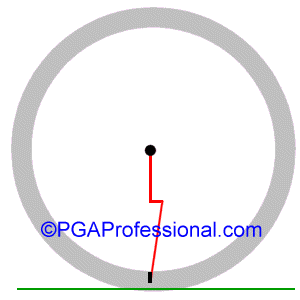 |
Answer:
Hi Jack,
It's pretty easy to understand once you have enough information. Let's make a couple baseline assumptions for our explanation here just to keep things very simple*: 1. the bottom of the swing arc is straight below your sternum/center of stance and that is where the putter head is resting at address 2. therefore, at any point beyond that (i.e., any ball position left of center for a right-hander) the putter head is on the upswing portion of the arc.
Putters usually have somewhere around 3 or 4 degrees of loft, so leaning them forward at address (even 3 or 4 degrees) would still allow for more than 0 degrees at impact for any ball position left of center (see the image to the right, which is not to scale and exaggerates the angles a bit, but illustrates the idea).
Thanks for visiting PGAProfessional.com and best of luck with your game. MB
* There are many other potential variables and possible variations
Rules, Etiquette and Procedures > Using a tee to help keep head still
Question:
January 18, 2012I like to put a clean tee in my mouth when I swing a club. It helps keep my head still. Is this considered an aid and therefore illegal?
Maureen Gingrass
Rio Vista, CA
Answer:
Hi Maureen,
Well, that's about the strangest rules question I've gotten.I almost never answer rules questions (see rules FAQ) but this one is odd enough, and speaks to intention, so others can probably learn from it. Here are some quotes from the rules.
First, the qualifier: "A player in doubt as to whether use of an item would constitute a breach of Rule 14-3 should consult the USGA."
Next, my interpretation (which means you should consult the USGA to confirm) is that what you are doing does violate the rules, yes. It involves Rule 11, Rule 14-3 and Appendix IV.
From Rule 14-3. Artificial Devices, Unusual Equipment and Unusual Use of Equipment
Except as provided in the Rules, during a stipulated round the player must not use any artificial device or unusual equipment (see Appendix IV for detailed specifications and interpretations), or use any equipment in an unusual manner:
a. That might assist him in making a stroke or in his play
From Appendix IV
Tees (Rule 11)
A tee is a device designed to raise the ball off the ground. A tee must not:
- be longer than 4 inches (101.6 mm);
- be designed or manufactured in such a way that it could indicate line of play;
- unduly influence the movement of the ball; or
- otherwise assist the player in making a stroke or in his play
PENALTY FOR BREACH OF RULE 14-3: Disqualification
Finally, some discussion. It seems to me that based on your intention (using the tee to help you keep your head still -- I assume as a reference point in your visual field?) that using anything at all (toothpick, cigarette, drumstick, baseball bat) in that manner would be a violation of the rule. Similarly, you're not allowed to move a rock or leaf, etc., onto your target line, or lay one of your other clubs down, etc., to help with lining up. If you simply enjoyed having a tee in your mouth when hitting shots, and it had nothing to do with helping you play the stroke, there would be no issue with it. It's when you add the part about it helping you keep your head still that it violates the rules.
Let me know if you find out something different from the USGA. For anything further on this or other rules see rules FAQ. Thanks for visiting PGAProfessional.com and best of luck with your game. MB
